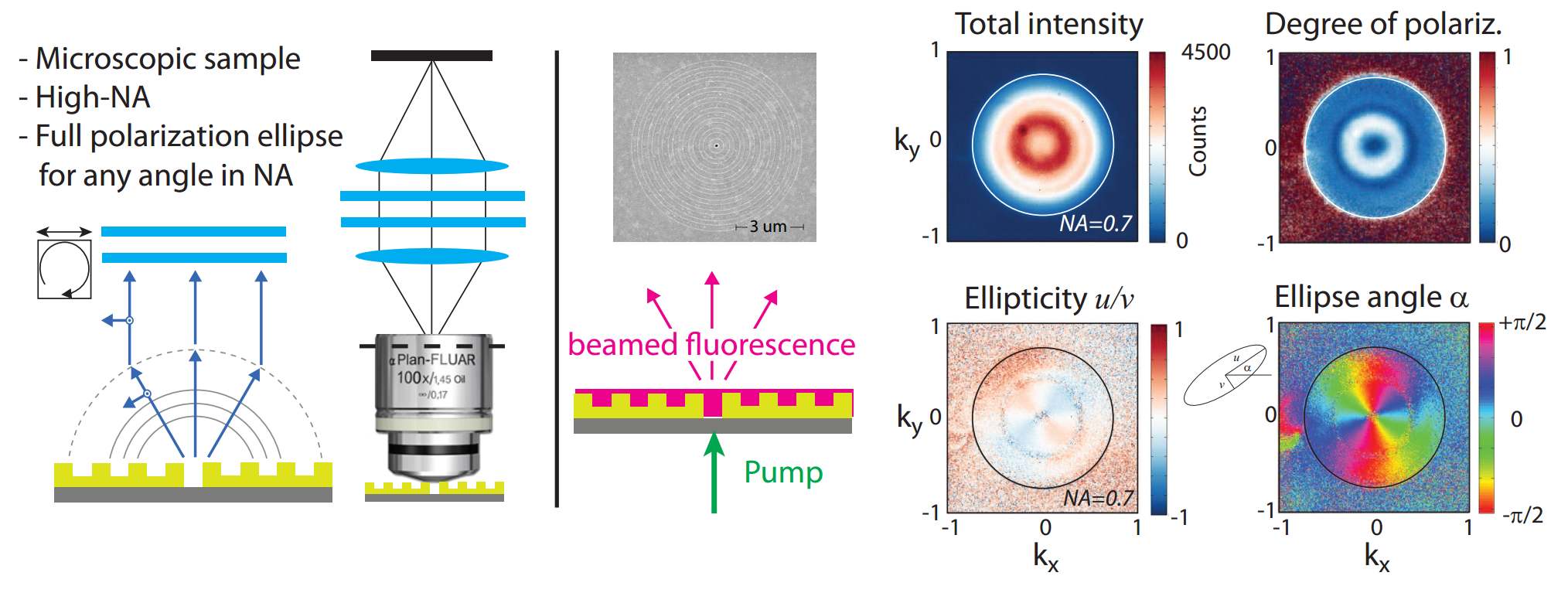Nanoscopy in k-space and real space
Single-emitter and Purcell-factor microscopy
Working with single nano-antennas and single quantum emitters directly implies a strong interest in nanoscopy, and nano-manipulation. Questions one immediately ask are for instance: how do you select an excellent emitter on basis of its photophysical properties, how do you position one object relative to the other via chance, lithography, or nanomechanical manipulation, and what are the scattering properties of single objects. A workhorse tool in our group is single molecule fluorescence microscopy. Using state of the art methods, one can nowadays measure the spectrum and lifetime of a single emitter within 10 ms, meaning that one can really follow changes in photophysics in time (missing reference). Superresolution and NSOM techniques can be used for localizing single objects relative to each other. In our work, we focus on applying such techniques to light-matter interaction problems. Examples are measuring Purcell factors as function of spatial coordinate with superresolution, measuring the intrinsic quantum efficiency of single emitters , and measuring emission properties while you make geometrical changes to a resonant nanostructure.

K-space radiation patterns – amplitude, vector and phase:
Resolving angles in microscopy is at least as informative as resolving space. What is the distribution of scattering or of photon emission over angle? In the fields of plasmonics and metamaterials, intuition very often relies on classifying a structure as a dipole, multipole, magnetic moment, as having chiral contributions, or as being a coherent interfering sum of terms. Quantifying this intuition is difficult as one can not actually measure induced multipole moments. Alternatively, one can measure the amplitude, polarization, and phase-properties of the light that a single nano-objecct emits or radiates into each solid angle. In principle this is sufficient information to reconstruct all the near-field properties. We use so-called `Fourier’ microscopy, mapping the angular distribution of light directly on a camera to quantify radiation patterns and polarization. We apply this method to plasmon antennas that beam fluorescence in a specific direction, to plasmon lattice phosphors and lasers, and to antennas that impart chirality, and orbital angular momentum, to emitted light.



